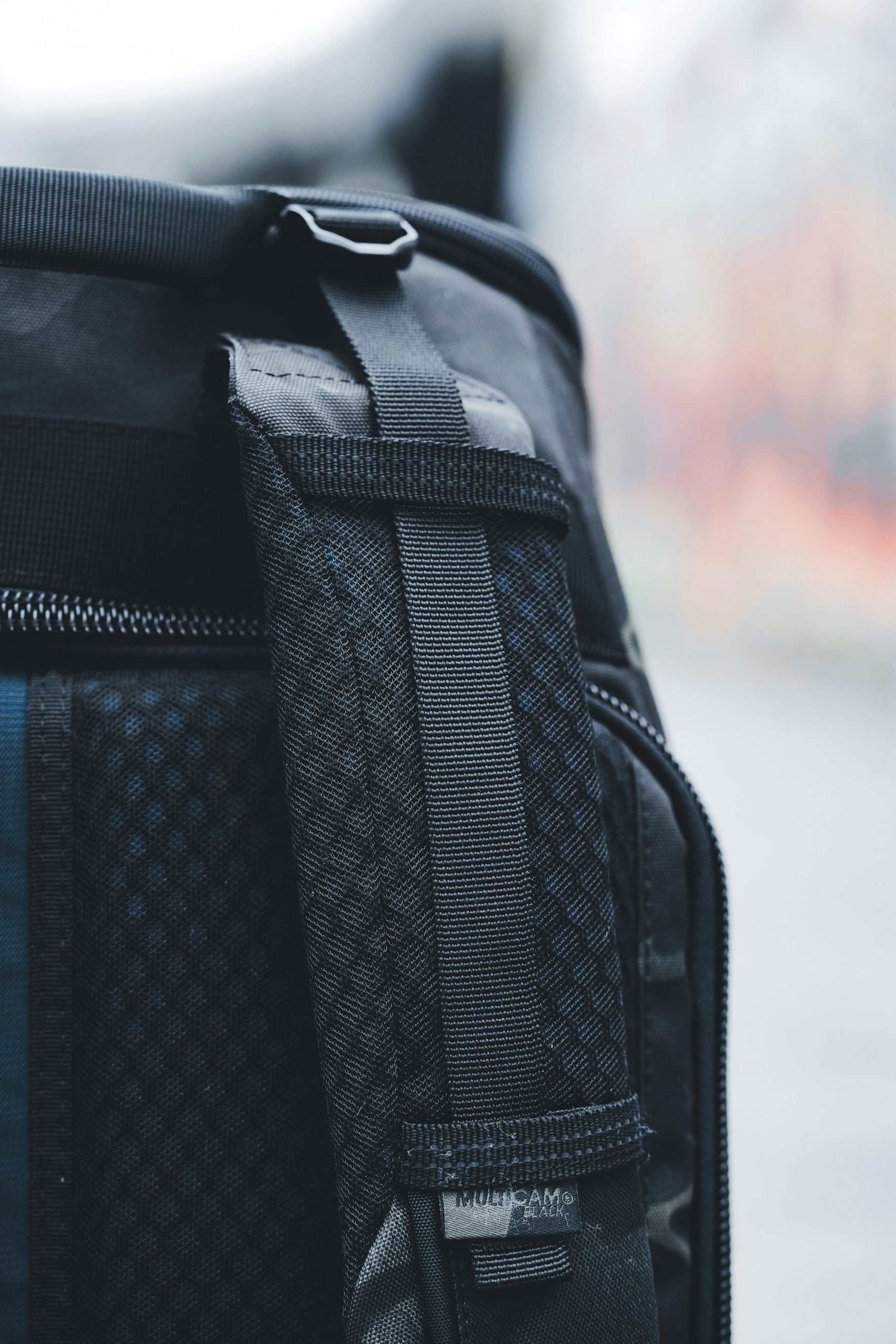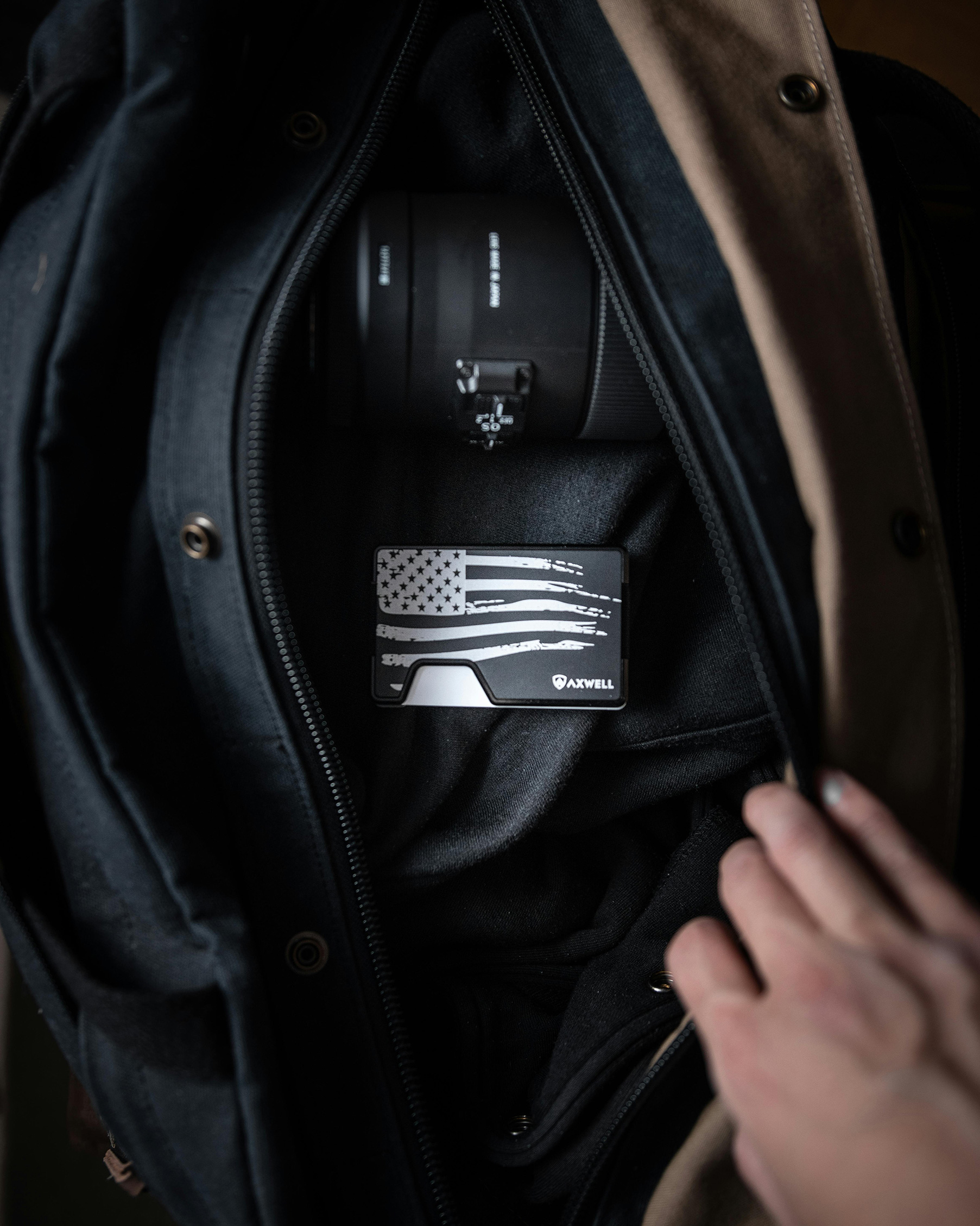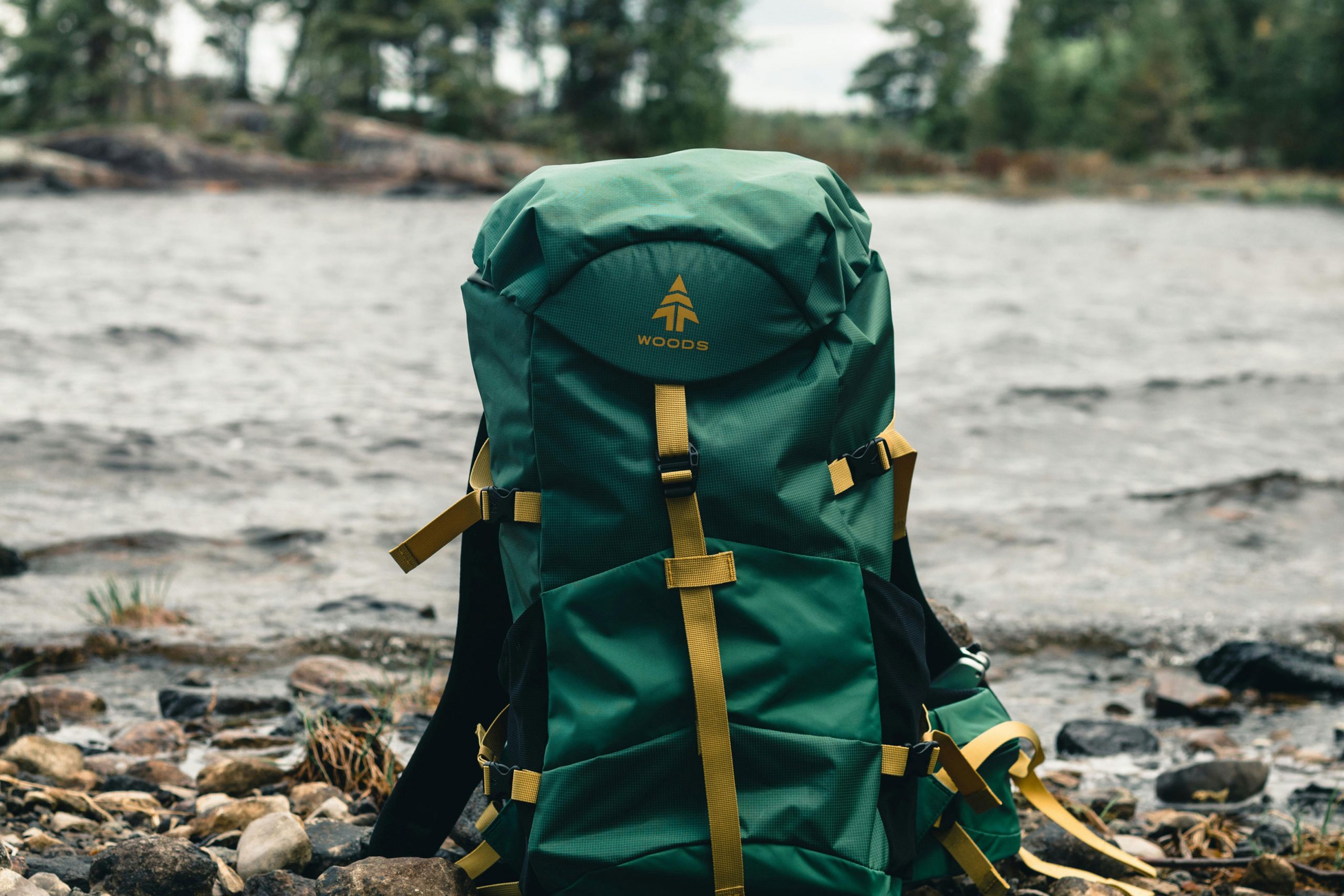When you grab your tote, sling your backpack, or clip on your climbing gear, webbing’s the stuff working hard to keep everything secure. You might think it’s just a simple strip, but it’s actually a cool piece of engineering. It brings together material science and careful production.
Let’s talk bag webbing. It’s the unsung hero in bags and packs. We’ll look at everything, from the tiny bits that make up the fibers to the tests that make sure your stuff doesn’t fall apart when you need it most.
What Is Webbing?
Webbing is a strong fabric woven as a flat strip or tube. It gives bags their strength, lasts a while, and can be changed to fit different needs.
It’s like the bones of your bag. It holds everything together, shares the weight, and keeps your bag from falling apart. Unlike regular fabric, it’s made to handle being pulled on, resist scrapes, and stay strong.
How Webbing Is Made
It’s more than just wide woven fabric. It’s put together with a few important things:
Warp and Weft: The long threads (warp) take most of the weight. The threads that go across (weft) keep it steady and spread the weight out.
Edge Finish: Good webbing has edges that are done carefully. This keeps it from falling apart and keeps it strong.
Weave: Different weaves do different things. Tight weaves are the strongest, while looser weaves are bendable and comfy.
Coatings: Lots of webbing has special coatings that make it better at things like blocking water or resisting the sun.
What Webbing Is Made Of
Nylon Webbing
Nylon’s the best for stuff that needs to be strong but light.
Why It’s Great:
- Really strong because of the way the tiny pieces that make it up fit together.
- Doesn’t scrape easily.
- Stretches a bit, which helps when things get pulled hard.
- Doesn’t break down from most stuff or the sun.
What It’s Used For:
- Climbing and safety gear.
- Backpack straps that carry a lot of weight.
- Military and police gear.
- Outdoor gear where things can’t fall apart.
Polyester Webbing
Polyester’s good all-around and works for lots of things.
What Makes It Good:
- Doesn’t stretch as much as nylon.
- Stands up to the sun better.
- Doesn’t break down from stuff like chemicals.
- Stays strong even when it’s wet.
- Costs less than nylon.
What It’s Used For:
- Stuff used around water, like boats, where the sun’s always out.
- Things that can’t stretch.
- Bags for everyday use.
- Things where you want to save money but not lose quality.
Polypropylene Webbing
Polypropylene’s cheap and works well for things you use every day.
Good Things:
- Light and floats.
- Doesn’t get ruined by water or chemicals.
- Doesn’t cost a lot, so it’s good for making lots of stuff.
- Easy to clean.
Not-So-Good Things:
- Not as strong as nylon or polyester.
- Breaks down in the sun if it’s not treated.
- Can’t handle really hot stuff.
Best Used For:
- Regular bags.
- Stuff that needs to float.
- Things you don’t need to last forever.
- When you don’t want to spend too much.
Natural Webbing
Nylon and polyester last long, but cotton and hemp are better for the environment.
Cotton Webbing:
- Feels good on your skin.
- Feels natural.
- Easy to color.
- Breaks down naturally and doesn’t hurt the earth.
Hemp Webbing:
- Natural option that lasts a super long time.
- Stops germs from growing.
- Gets softer when you use it.
- Doesn’t hurt the environment.
What They’re Used For:
- Bags that look good.
- Stuff that’s good for the earth.
- Things that need to breathe.
- Old-fashioned bags.
Webbing That Does More
PVC Coated Webbing
PVC Coated Webbing is made of plastic and polyester, and it’s waterproof and doesn’t smell.
It’s webbing with a layer of protection:
Why It’s Good:
- Totally waterproof.
- Easy to clean.
- Doesn’t stain.
- Feels soft.
- Good for things like medical or restaurant gear.
Used For:
- Medical bags.
- Restaurant gear.
- Stuff for boats.
Webbing That Shines
They help you see things better.
How They Work:
- 3M tech makes webbing shine.
- Colors that jump out.
Webbing for Special Jobs
Webbing can:
- Not catch fire
- Stop germs
- Work with electrics
- Not make static
How Strong Is Webbing?
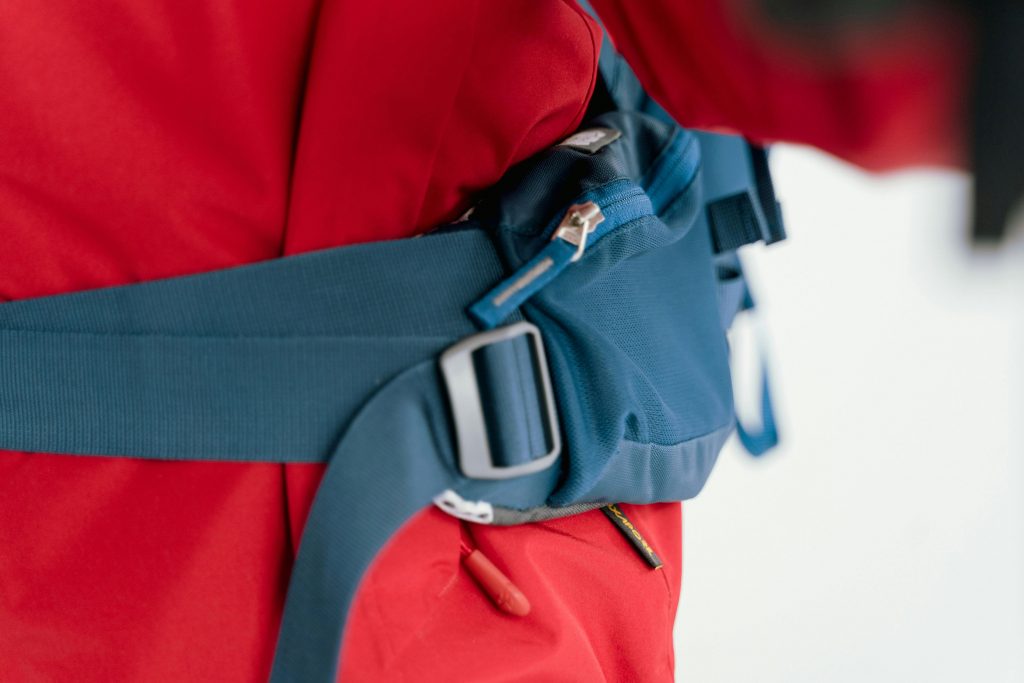
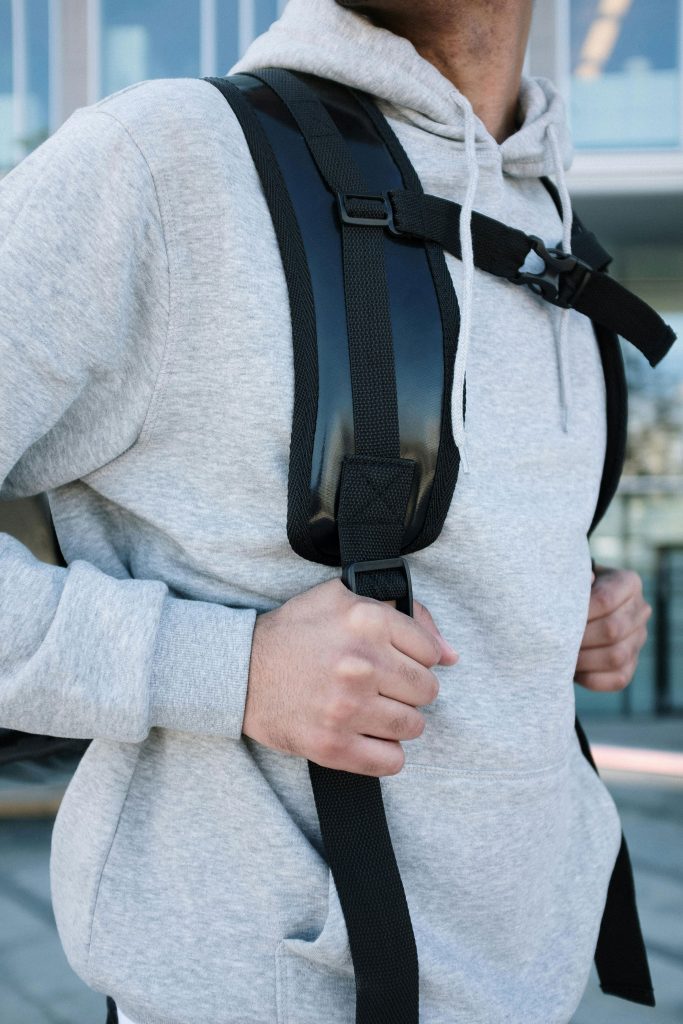
Breaking vs. Working
They test webbing by pulling it until it breaks.
Breaking Point: How much it can take.
Working Limit: Keep it at 20-25% of the breaking point to stay safe.
Testing Rules
There are rules for testing webbing.
What They Test:
- How much it can take before breaking.
- How long it stretches.
- How well it holds up to scrapes.
Are They Good?
They check the webbing to make sure it’s good.
How They Check:
- Test a bunch to make sure they’re all the same.
- Pick some to check.
- Test how heat and cold change it.
- Test how it holds up over time.
How Wide and Thick?
How Wide for What?
1/2 (12mm):
- Light jobs
- Adjusting straps
- Looks
- Small bag handles
3/4 (19mm):
- Straps that do a bit more
- Straps that hold things tight
- Belts
- Midsized bags
1 (25mm):
- Backpack straps
- Holds weight
- Bags for day to day
- Normal size
1.5 (38mm):
- Strong jobs
- Big back packs
- Factory gear
- Extra comfy
2 (50mm):
- Super strong
- Safety and climb gear
- Lift in factory
- Need it strong
How Thick?
Webbing thickness matters.
- Thick = Strong
- Thin = Bendy
- Thick = Comfy
- Make sure it fits the buckles.
How It’s Made
Step 1: Get the Fiber Ready
Melt and pull it into strings.
Step 2: Get Threads Ready
Line up all the threads.
Step 3: Weave It
Weave the threads.
Step 4: Heat It
Heat it to keep it from shrinking.
Step 5: Finish It
Add stuff like waterproof coating.
Step 6: Make Sure It’s Good
- Test how strong it is.
- Measure width and thickness.
- Check color.
How It Affects How Your Bag Works
Weight and Comfort
- Wide straps spread weight and are comfy.
How It Looks
- Match color
- Different material
Make It Work
- Balance strong and heavy.
- Lasting and cheap.
- Comfy and works well.
Where It’s Needed Most
Climbing
If it breaks, you can get hurt:
- Extra strong
- Can’t scrape
- Stands the sun
- Won’t stretch
Military
It has to work in bad places:
- Hot and cold
- Stuff like gas
- Can’t scrape
Boats
It has to work in water:
- Stands sun
- Stands salt
- Dries fast
Medical
It has to be clean:
- Easy wash
- Stands stuff
What Can Go Wrong and How to Dodge It
Wears Out
Scrapes:
- Covers
Sun:
- Cover
Stuff:
- See if matches
Used Wrong
Heavy:
- Tags
Sharp:
- Covers
Bad Sews:
- Good sews
Keep It Going
Clean It
- Rinse fast
- Wash easy
- Rinse soap
- Let dry
- Check for mess
Check It
- Are there cuts?
- Is it frayed?
- Is it beat?
Put It Away
- Cool spot
- No sun
Is It Worth It?
What Does It Cost?
- Polypropylene: Cheapest
- Polyester: Good Deal
- Nylon: The Best
- Spec Web: Does It All
Costs Over Time
- Cheap at first
- Cost to keep it together
- Costs to fix it
Is It Good for Me?
- Happy people
- Not a mess
- Nice to wear
Good for the Earth?
Good Stuff
- Recycle
- Compost
How It’s Made
- Less energy
- Less stuff
What’s New?
Works Smart
- Knows how much weight
- Knows temp
- GPS
- Knows wears
Stronger Stuff
- Heals self
- More stronger
Better Build
- Strong easy
- Know where strong
What Do I Get?
Ask Yourself
- How much weight?
- Hot or cold?
- Black or green?
- How much bank?
Where Do I Get It?
The Best Spots
- Big Selection
- Good for the Earth
Test for Quality
Look at It
- Easy weave?
- Same color?
- No spots?
Test Easy
- Test strength by pulling
- Test scrapes by rubbing
- Test sun by heat
- Test water
In Closing
Webbing’s is good and lasting.
Webbing is:
- For style
Pick the best to be well.
Your bags are only as strong as their weakest part. Make sure that things go as expected.
Simple Web Guide
For Looks
- Look = Cotton
- Cost = Less
For Time for All Kind Adventure Gear
- Strong = Nylon
- Cost = Not Cheap
For Safe Jobs
- Safe = Hi Test Nylon
- Cost = You Bet
#WebbiingScience #BagEngineering #MaterialsScience #TextileEngineering #BagManufacturing #StrengthTesting #NylonWebbing #PolyesterWebbing #QualityControl #BagDesign #TechnicalTextiles #WebbiingTesting #OutdoorGear #BagHardware #ManufacturingExcellence #ProductEngineering #TextileTesting #DurabilityTesting #WebbiingSelection #BagConstruction #MaterialEngineering #QualityAssurance #TechnicalSpecifications #PerformanceTextiles #IndustrialDesign #ProductDevelopment #MaterialsResearch #EngineeringExcellence #ManufacturingQuality #WebbiingInnovation
